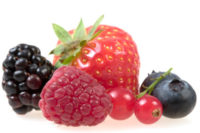Antioxidant Considerations

Most consumers take it for granted that food and beverages containing antioxidants are a shortcut to healthy living, cancer prevention, and beauty--a wonder-molecule of sorts. The Nielsen Company reported that U.S. sales of food and drink containing an antioxidant claim topped $2 billion for the year ending November 28, 2009, up from $889 million for 2005. The volume of sales for antioxidant supplements grew 10% in the same period. In 2009, Vitamin Water reaped $500 million in sales, marketing drinks like XXX, a triple blend of acai, pomegranate and blueberry extracts containing a mega-dose of antioxidants. But is a triple dose of antioxidants any better than none at all?
The science behind antioxidants’ purportedly life-changing powers relates--as the name implies--to their ability to delay or reduce oxidative processes. The risk of many diseases, including heart disease, cancer, and neurodegenerative disorders like is thought to increase due to damage from free radicals. Free radicals stabilize themselves by oxidizing other molecules--fats, protein, DNA--and creating more radicals in the process. Chemical antioxidants generally stabilize radical molecules by donating an electron, thereby rendering them inactive.
It does not require a cosmic leap of logic to see where this is going. More antioxidants in the diet = less free radicals in the body = less diseases. However, what if there is a problem with this theory? What if more antioxidants in the diet ≠ less radicals in the body? Scientific data on the efficacy of antioxidant-rich diets are inconclusive at best. In 2007, for example, the Journal of the American Medical Association reported on a scientific trial in which the ingestion of antioxidant supplements (beta carotene, vitamin A, and vitamin E) actually increased mortality in human subjects. It may be that antioxidants occurring naturally in fruits and vegetables are easily assimilated into the body, while supplements and nutraceuticals are less so. In too high a dosage, antioxidant supplements can ironically generate harmful levels of free radicals.
Consumer confidence in antioxidants remains high, however. Some 78% of consumers used antioxidants in some form in 2008, with 22% saying they increased their use that year, according to a HealthFocus study. The same study found “a good source of antioxidants” to be an “extremely/very important” claim for 47% of consumers. Antioxidant-rich foods have spiked in sales, with purchases of acai berry ballooning 900% between 2007 and 2009, according to SPINS, a San Francisco-based analyst group for the natural products industry.
As antioxidants have risen in popularity, so too have the FDA’s efforts to control the industry. As of June 2011, the FDA’s guide for food labeling and nutrient claims only allows antioxidant nutrient content claims for certain nutrients that have recognized antioxidant activities, meaning, “after it is eaten and absorbed from the gastrointestinal tract, the substance participates in physiological, biochemical, or cellular processes that inactivate free radicals.” Also, the antioxidant must have an established RDI, the one exception is beta-carotene, which is a precursor for vitamin A and the claim is related to the level of that vitamin. That is, in order to make a specific nutrient content claim, the amount of antioxidant nutrients in a single serving must supply a certain percent of its recommended daily intake for that antioxidant. For example, a “good source” of antioxidants claim would have 10-19% RDI of that nutrient per serving. See http://tinyurl.com/6jwcdav and scroll down to antioxidants.
Last August, the FDA issued warnings to Dr. Pepper Snapple Group for making claims of enhancing its Canada Dry ginger ale with “200mg of antioxidants from green tea and vitamin C.” The FDA did not recognize the product as containing any antioxidant nutrients. A few months earlier, the FDA found POM Wonderful, a brand of pomegranate juice, in “serious violation” of the Federal Food, Drug & Cosmetic Act. On its website, POM made multiple claims regarding the health benefits of its products, such as delaying atherosclerosis and slowing the growth of prostate tumors. The FDA not only labeled POM’s claims as unsubstantiated but also found it to be altogether misbranded as “uniquely high” in antioxidant nutrients.
It is understandable why companies are quick to tout the real or not-so-real antioxidant activities of their products. They are quick and easy ways to associate products with the healthy lifestyle trend so important to consumers. It is also a risky business, as the FDA can quickly pull the plug on a misbranded product and cost a company thousands of dollars in advertising and reputation management. With the antioxidant supplements sales generating $27 billion per year, however, companies are in no danger of facing a customer shortage.
Looking for a reprint of this article?
From high-res PDFs to custom plaques, order your copy today!






